ManMade Recommended: You Need to Get Your Hands on these Sandflex Rust Erasers
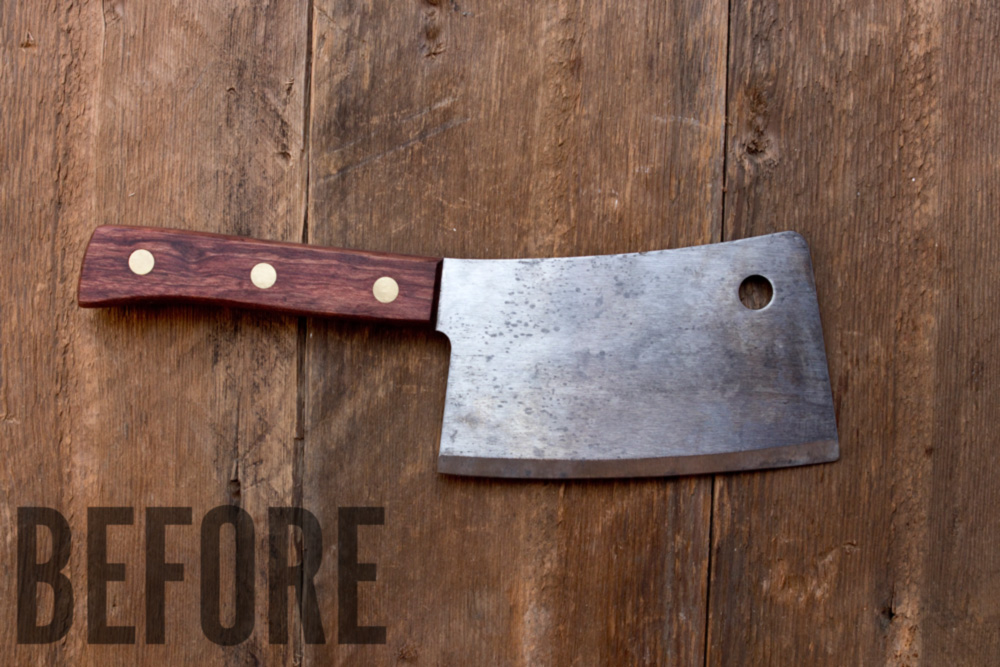
Earlier this week, for the Fourth of July holiday, some friends and I decided to try our hands at roasting a whole pig. We were cooking for 60-80 people, and wanted to do something more special than hamburgers and hot dogs, and figured: well, if we’re going to try it, now is as good of a time as any.
We wanted to go with a Southern United States-style “pig picking,” meaning lots of wood smoke, and cooking over low and slow temperatures. In order to get the whole animal ready to eat with such a gentle heat, we needed to start the night before. And that’s where this story begins.
We weren’t cooking at my house, so I’d taken whatever tools I thought would be helpful: thermometers, blowtorch, butchery books, ash bucket, and my knives and meat cleaver. All of which we used – in the dark, at 1 am. By the time we got the animal prepped and fire temperature stabilized, it was 6:00 am, and the second shift team came in to relieve us.
Exhausted, I returned home smelling of smoke and ready to get a few hours of sleep. When I woke up again, I’d realized that I hadn’t done my best to clean up after the process. Among other things, I hadn’t washed my knives and tools after prepping the pig. I didn’t want to wake the host family at three AM by splashing around in their kitchen, and then, without sleep, I’d just forgotten. That’s 1) unsanitary and 2) in the case of my cleaver, bad for the tool itself. Like a chisel or plane blade or carving knife, my clever is made of high carbon steel, not stainless, and, once it sat wet with meat juices for six hours, went from shiny and bright to dull and spotted with dark grey – the early signs of…you guessed it:
RUST.
The truth is: that’s not the end of the world for something like a meat cleaver. But it’s a good reminder that high carbon steel, which allows our tools to get sharp, stay sharp, and stand up to years of abuse can develop rust from time to time. We’ve written about the best ways to remove rust from tools but if you’re looking for a shortcut, check out these erasers.
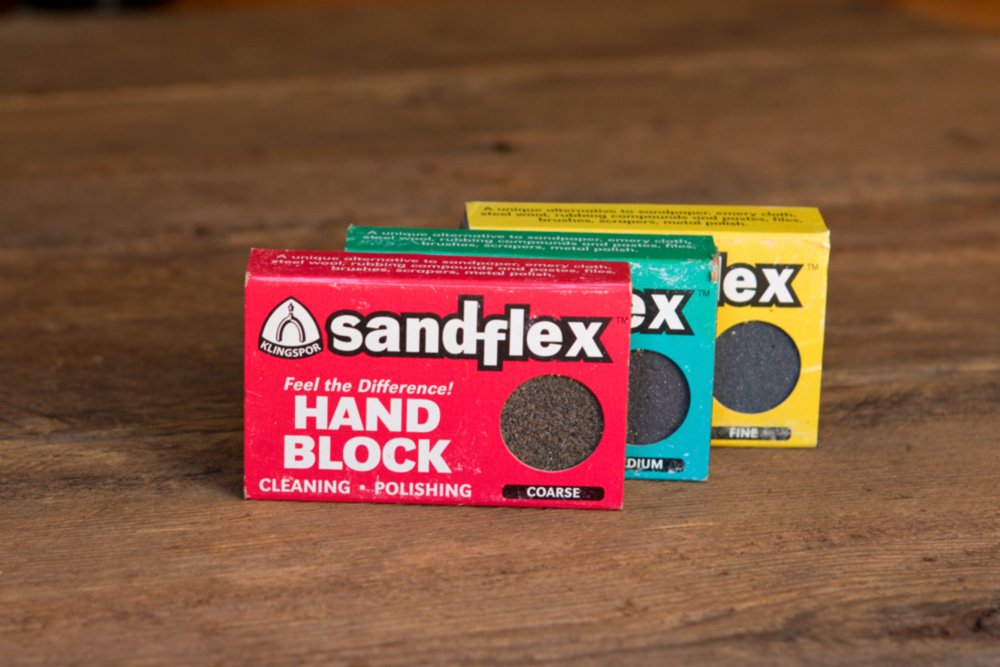
For the task, I love these little Sandflex Rust Erasers. They’re basically a bunch of grit (like sandpaper) embedded into a friable rubber block (like an eraser). Unlike a sanding block from the hardware store, as the Sandflex block wears, more grit is exposed, and a fresh surface available.
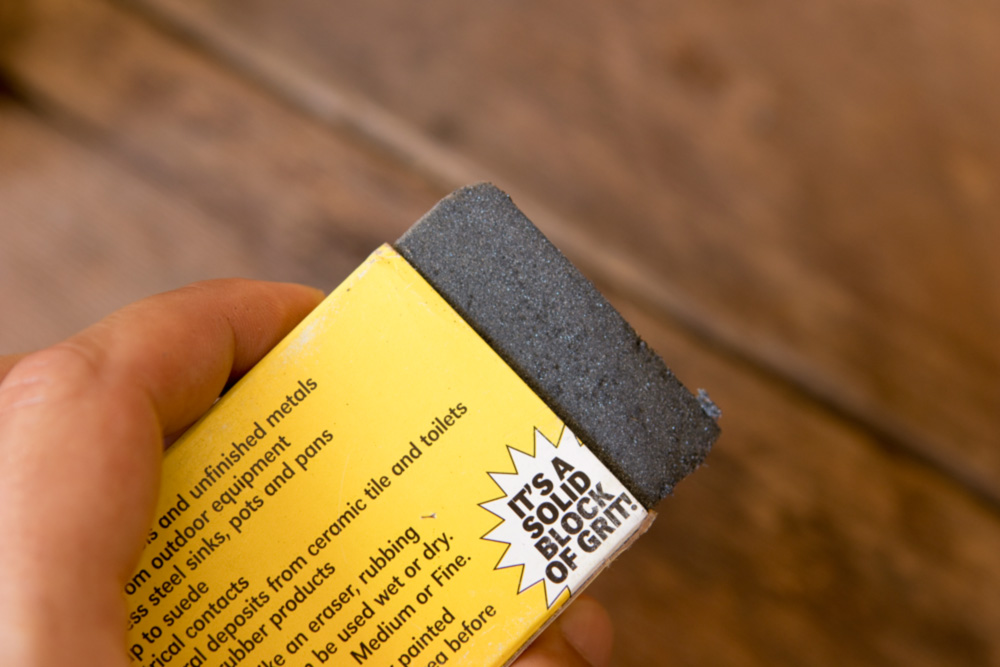
They come in a coarse, medium, and fine grit, and could be easier to use. I especially love that they can be carved, rounded, or shaped to get inside corners, grooves, etc, like a carving gouge or other concave/convex surfaces. You can use them on cookware, your steel sink, leather and suede, ceramic, and tons of other spots.
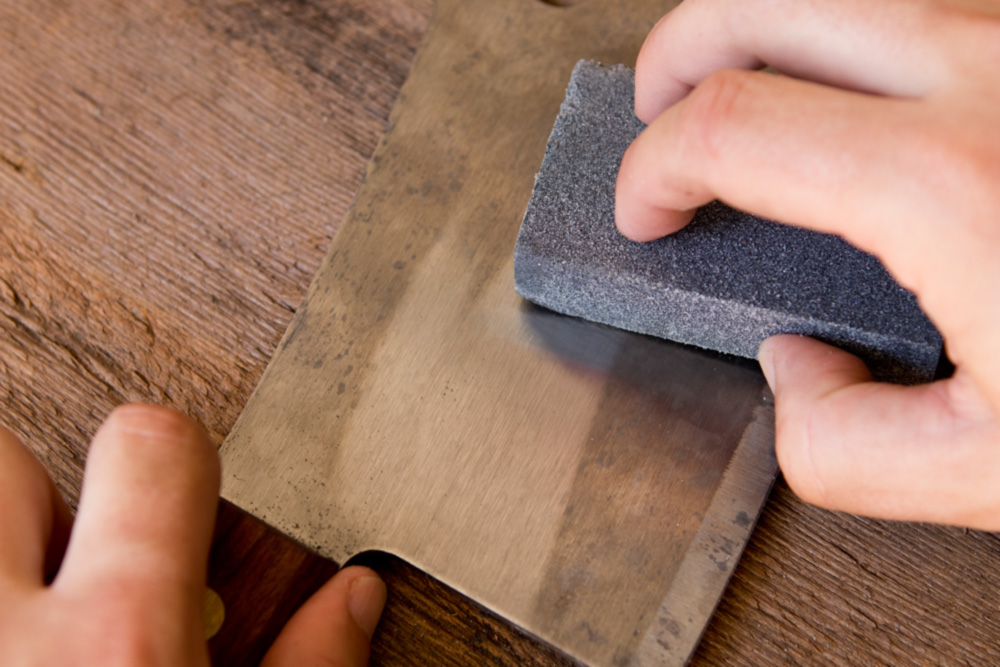
It’s not only a cool idea; the truth is: these products actually work. It takes very little effort to get the results you’re after, and uses very little material, making these things last for years.
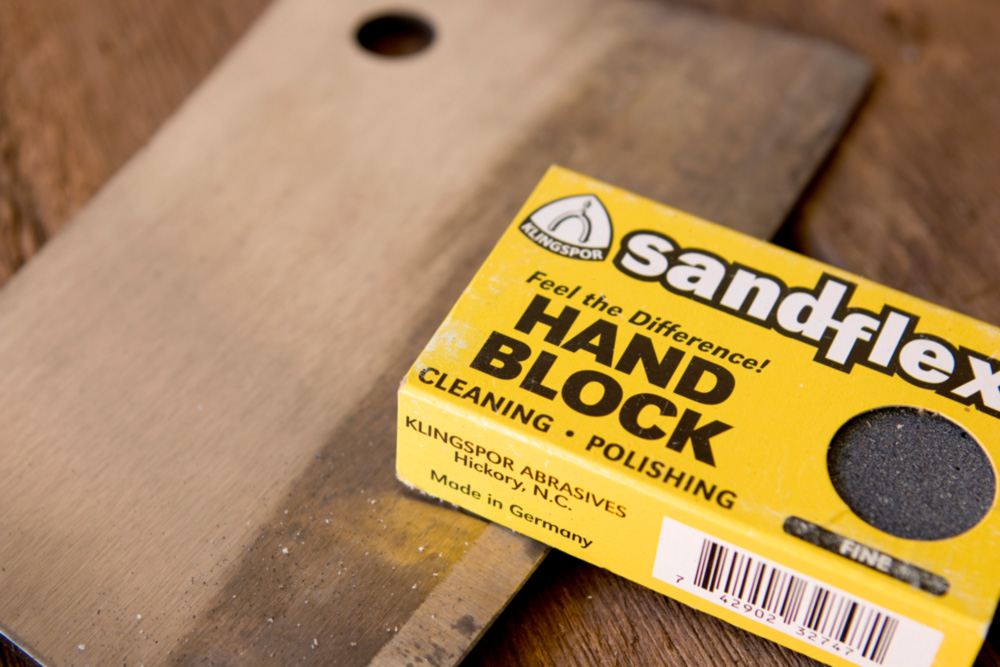
I spent about three minutes with the medium block, going over the whole surface to the discoloration, and then came back with the fine block to smooth the scratch marks. It’s helpful if you can go in the direction of the grain, but not totally necessary. You won’t damage the steel, it’s just more likely to show the scratch pattern.

Once you’re done, add a thin coat of oil to protect the steel. I have camellia oil that I use on my woodworking tools, but mineral or butcher block oil works just fine.
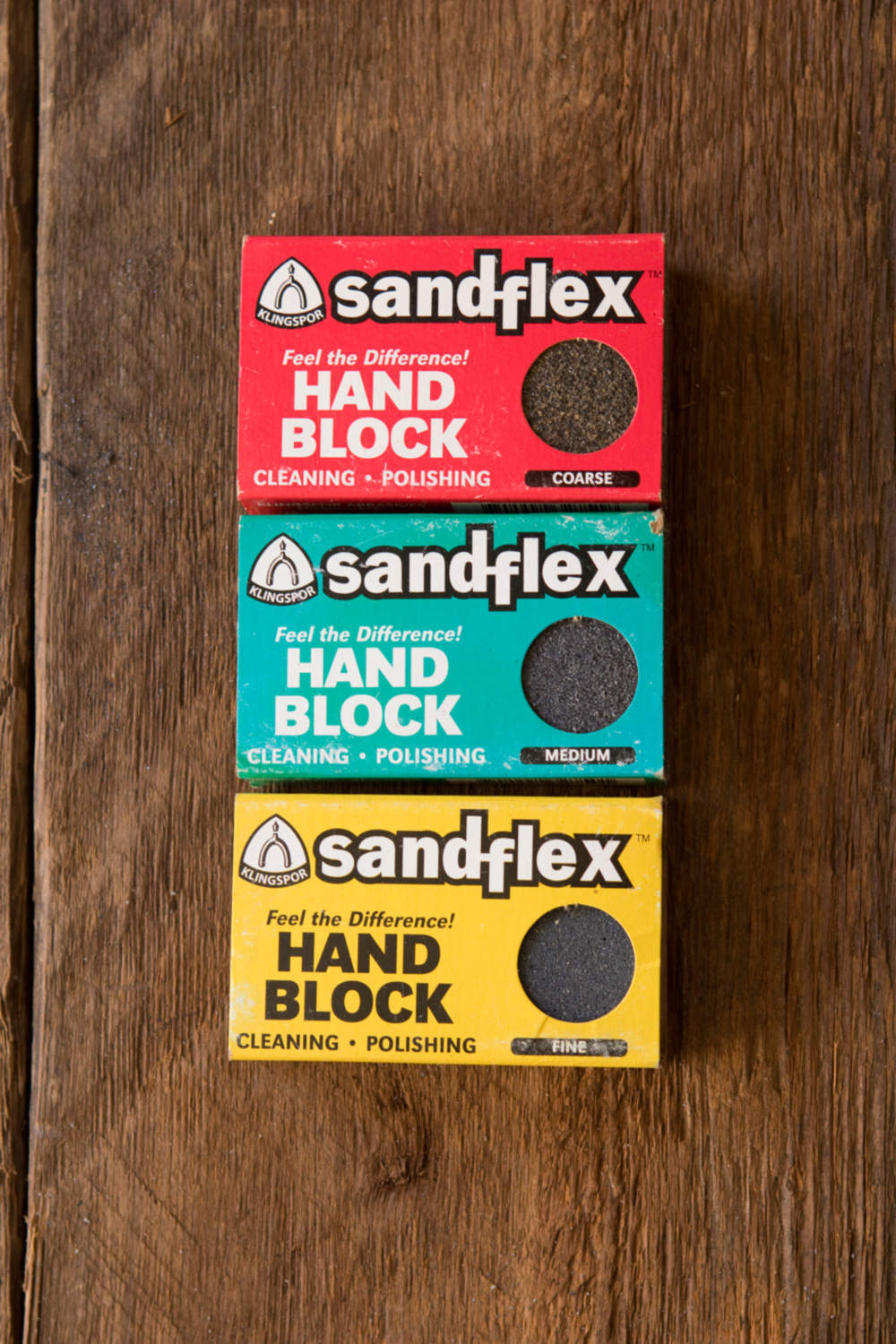
Seriously, these things are legit, and you can get a pack of all three grits for around $16 on Amazon right now. They’ll last forever, so for only ~$5 a piece, that makes them a seriously good DIY best buy. Pick some up!









